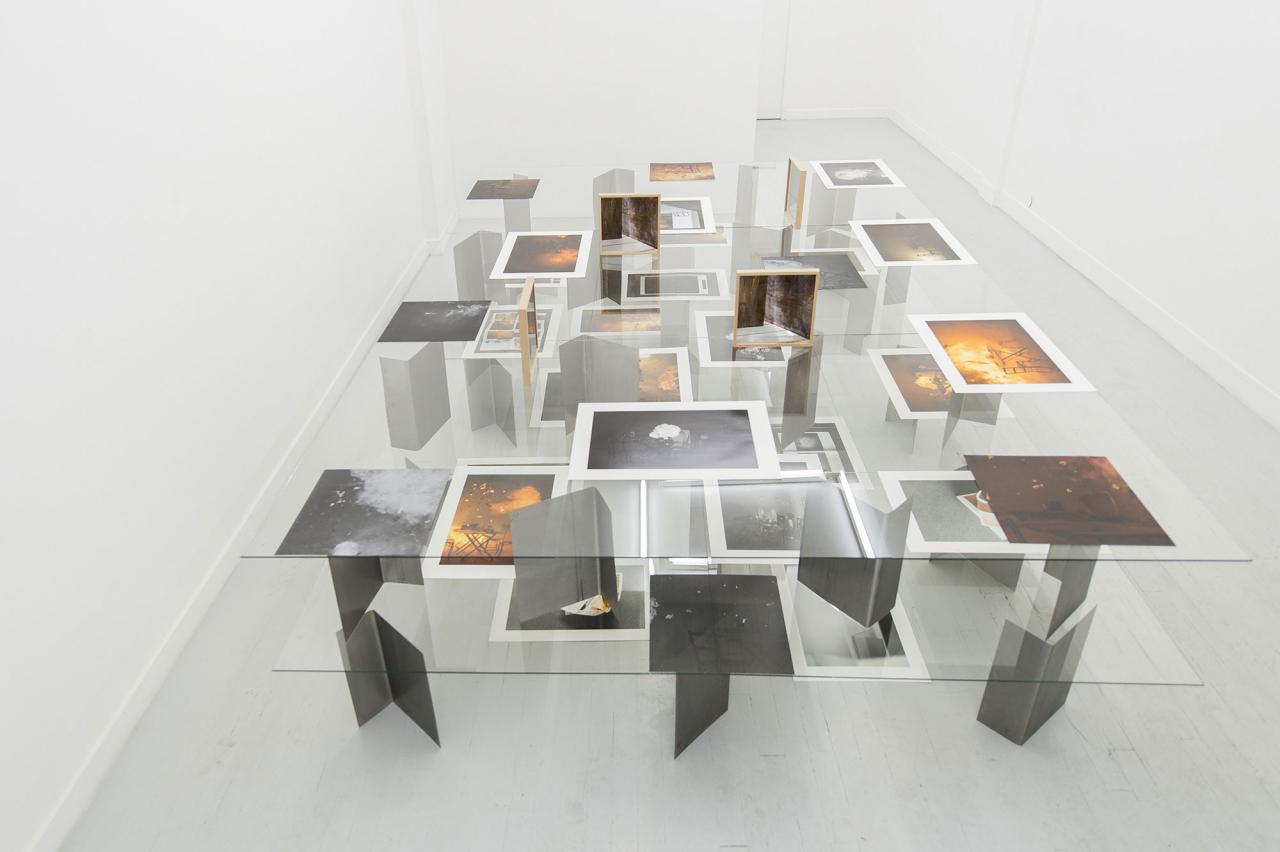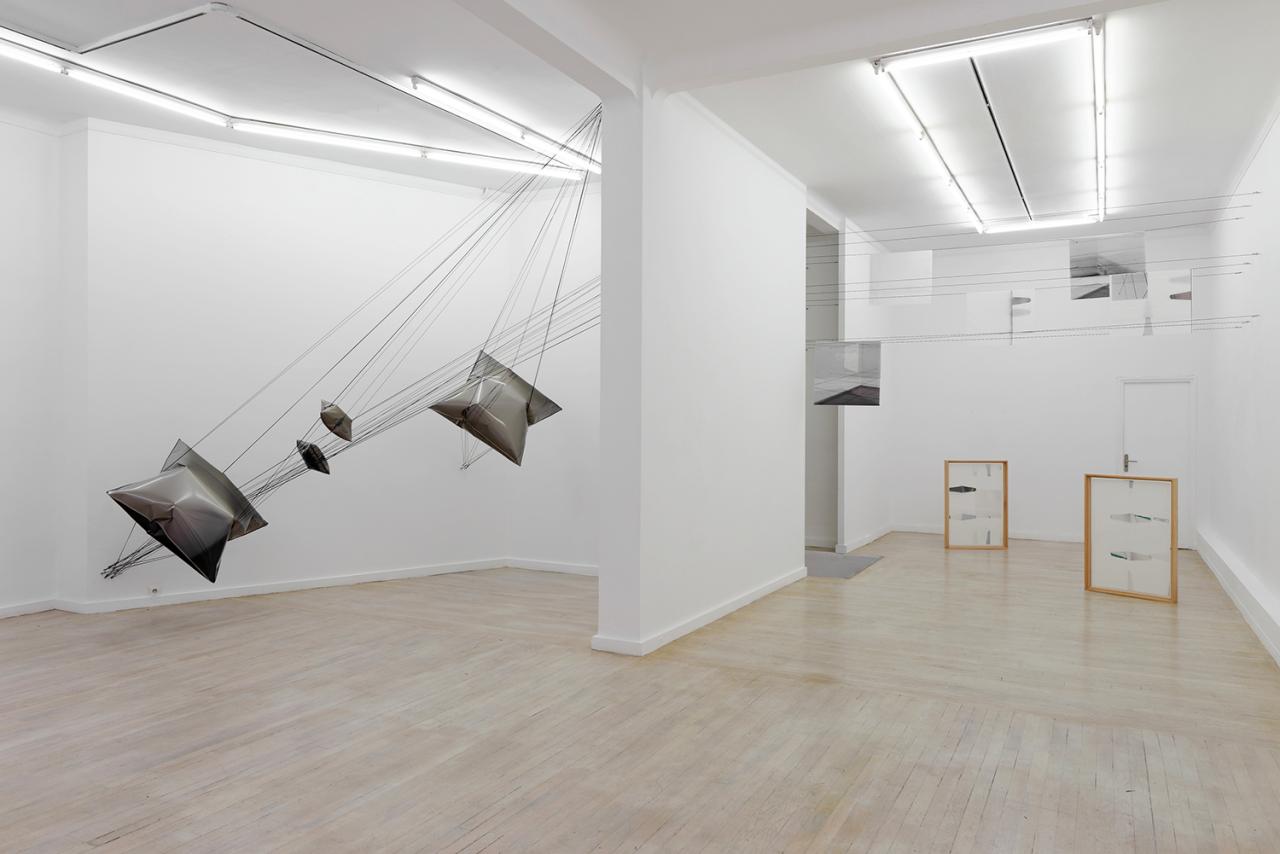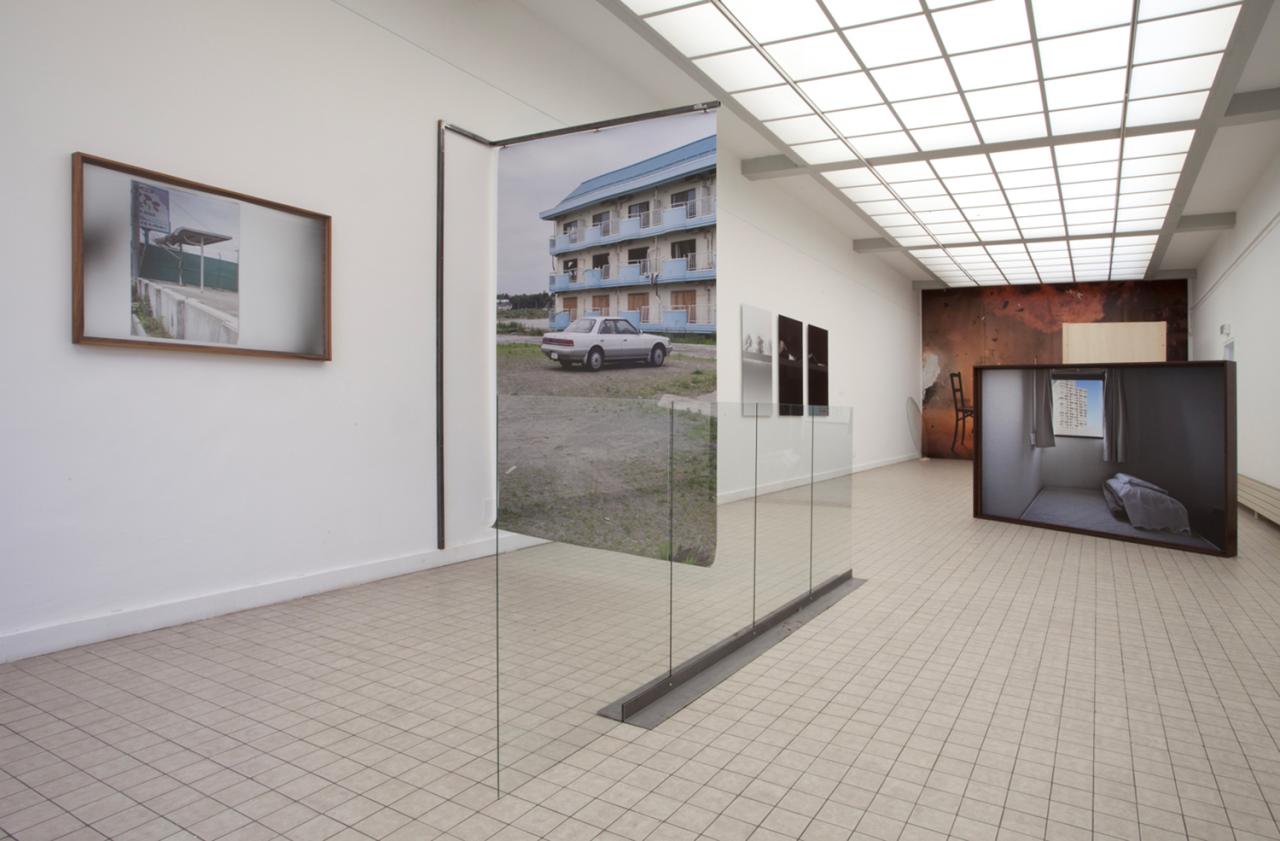Aurélie Pétrel
Born in 1980
Lives and works in Paris and Saint-Etienne



“Aurélie Pétrel’s work is an examination of the photographic image, its production modes, its (re)presentation and its activation in the form of installations. Positing the notion of “photographic partition”, the artist initiates a composition work that stretches out across space and time, in which each picture becomes meaningful and is established as a material creation “to come”. Aurélie Pétrel considers her work on movement within the photographic act as an ongoing process of thought and experience; it presupposes a constantly alert conscience, always seeking to capture, in every encounter and situation, potential ways of “activating” her camerawork. Her shots are at first kept in their “latent” state as digital files or prints filed in Phibox containers and, when the time comes, they are transposed at a three-dimensional scale. In doing so, the artist operates a transfer from planeness to volume and architecture.
The setups that Aurélie Pétrel creates liken the space in which they are shown with a complex construction set, in which architecture becomes part of a multiple and stratified experience of vision. Architecture has always been an omnipresent part of her compositions (landscapes or urban furniture, industrial buildings, indoor sceneries…), and acts de facto as a tool to define and structure the artist’s setups, with which she constructs a journey of experience and visibility for visitors. However, because it acts as a connector between images, the activation system that supports them, and the exhibition space, architecture also becomes a factor of indetermination, blurring the lines between subject, object, and environment.”
Excerpt from Table simulation #00, #01, 2015
By Emmanuelle Chiappone-Piriou and Aurélien Vernant
Translated by Lucy Pons
“I posit the idea of a photographic score (partition), from the double definition of the word “partition”. The first refers right away to musical composition and its system of notation, on which readings and interpretations can be based; the second, which is more specific, refers to sharing, and redistribution (of territories, for example). Based on this semantic ambivalence, the notion of a photographic “partition” can be formed, at once notation (reserve) and redistribution (no longer of space, but of time). The “shots” (silver, silver-digital and digital) are, for me, the “degree zero” of the process whereby images appear in this dynamic which is indexed to the idea of partition. They are in a way the embryonic phase of a (potential) operation of development, a literal “take” (prise), at once a concrete sampling and a summons to a future development (we talk about a prise d’appel –a take call, literally—before a projection, a leap into what is to come). So an initial time-frame, prior to the images, where images are already potentially shot or taken, in the act and the being of the exhibition, redistributed, shared out, and in accordance with a given context, and becoming from now on a secondary time-frame, not only consecutive but composed of (marked by) the double time of a transformation which contains the visibility of its own temporal traceability (its spectrum). Otherwise put, the partition (time-frame 1) is played out (time-frame 2) and its play is doubly marked by its origin and its presentation. The score—this is its function—can be played again, and be represented in these (its) simultaneous time-frames.”
Partition photographique, Aurélie Pétrel, 2014
Translated by Simon Pleasance, 2015
© Adagp, Paris